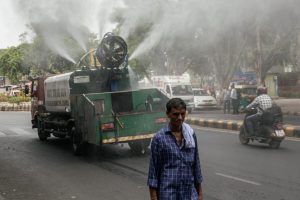Single use plastics soaring sea surface temperature

Photo credit Twitter Ministry of Earth sciences
By Our Correspondent
New Delhi, August 3: The sea surface temperature is rising more in the Indian Ocean than the globally estimated levels, while micro-plastics and the single use plastics are stated to be contributing to the adverse impact on the seas in the Indian subcontinent.
Single use plastic has been banned in India from July 1, while its prevalence is still seen in various parts of the country, in defiance of the statutory ban.
The government has informed the Lok Sabha that the Ministry of Earth Sciences recently published an assessment report on the climate change impact on the Indian region, which included impact of climate change on oceans.
“Based on scientific studies and the recent climate assessment report of the Ministry of Earth Sciences, the tropical Indian Ocean is warming rapidly over the recent decades,” said Jitendra Singh, Union Minister of State for Earth Sciences.
He stated that the average basin-wide sea surface temperature (SST) is warming at a rate of 0.15 oC/decade during 1951-2015.
“During the same period, globally averaged SST warmed at a rate of ~0.11 oC. Owing to this rapid warming, the sea level in the Indian Ocean was observed to be rising at a rate of 1.06-1.75 mm/year during the last century (1874–2004) and ~3.3 mm/year in the recent decades (1993-2015), which is in a similar range of the global mean sea level rise,” added the minister.
Further, National Centre for Coastal Research (NCCR), an attached office of MoES, collects the real-time information on coastal water quality by deploying water quality buoys at 10m water depth in coastal waters.
“NCCR is also undertaking research activities in quantifying litter (mainly meso, macro and microplastics) in the beach, in the water column and sediment on the sea floor,” added the minister.
An increase in the abundance of microplastics is observed along the east coast during the monsoon, he noted.
The stations nearer to the river mouth had higher numbers of microplastics concentrations, said Singh, while adding that “the beach litter survey revealed that the maximum accumulation occurs in the backshore than in the intertidal zone”.
The government also informed that the urban beaches have higher accumulation rates than rural beaches.
“Under Beach Clean-up program/activity, it was found that the majority of the waste composition was contributed by single use plastics,” added Singh.
The government, however, stated that no such report has been released by the recent UN Conference that the world’s seas are in crisis.








